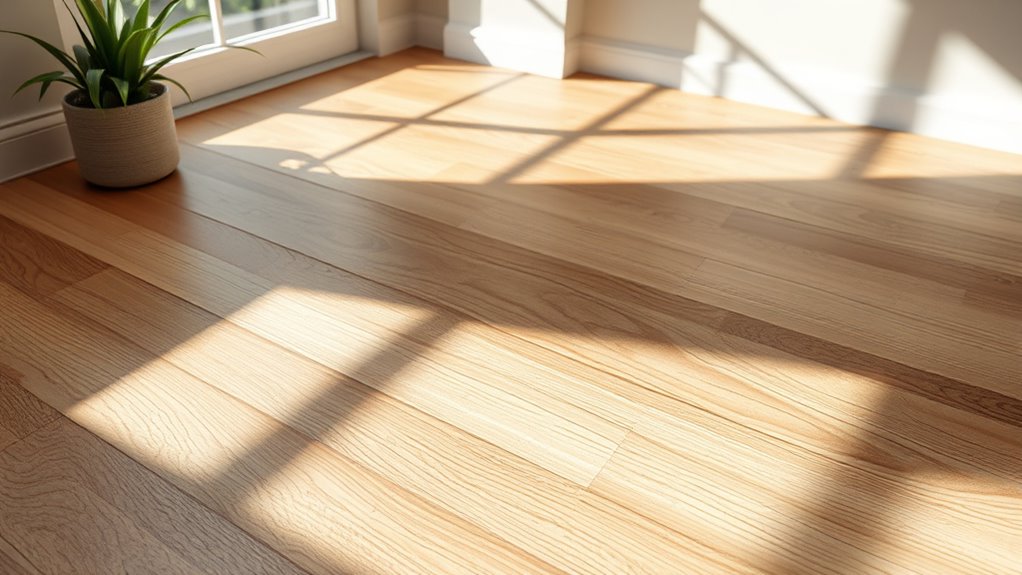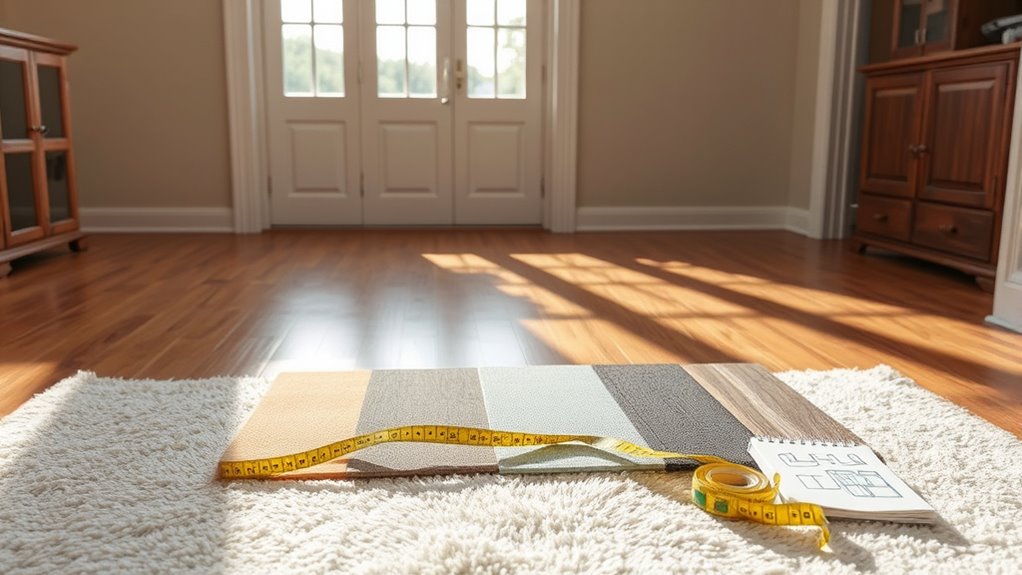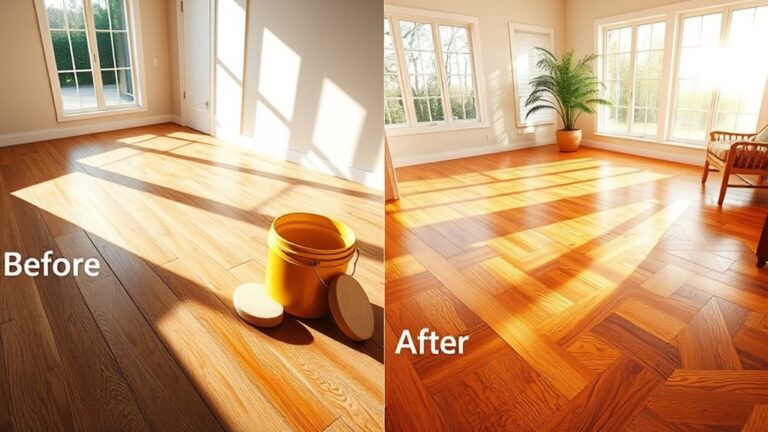Yes, you do need underlay for laminate flooring to guarantee proper moisture protection and sound insulation. Underlay provides a stable, even surface that minimizes joint stress and improves durability. It also acts as a barrier against ground moisture, especially over concrete subfloors, while enhancing comfort underfoot. Choosing the right type depends on your home’s needs, like noise control or uneven surfaces. Understanding these factors will help you achieve a long-lasting, high-performance laminate installation.
Benefits of Using Underlay With Laminate Flooring

Although laminate flooring can be installed without underlay, using one greatly enhances performance by providing sound insulation, moisture protection, and improved comfort underfoot. When you install an underlay beneath your laminate flooring, you create an effective acoustic insulation layer that minimizes noise transmission, allowing you freedom from disruptive echoes and footsteps. Additionally, an underlay serves as a moisture barrier, preventing ground moisture from penetrating the laminate, which is vital for maintaining floor integrity and preventing warping or swelling. Beyond protection, the underlay adds a subtle cushioning effect, improving comfort during prolonged standing or walking. By integrating these functionalities, you guarantee your laminate flooring performs at its best, maintains durability, and delivers a quieter, more comfortable living environment tailored to your desire for freedom and ease.
Types of Underlay Suitable for Laminate Floors
When selecting an underlay for your laminate floors, it’s crucial to take into account the specific properties each type offers to guarantee compatibility and best performance. Foam underlay is a common choice, providing a cost-effective solution that cushions the floor and offers basic moisture resistance. It’s lightweight and easy to install, making it ideal if you want a straightforward upgrade without complexity. Acoustic underlay, on the other hand, is engineered to reduce sound transmission considerably, perfect for multi-level buildings or rooms where noise control is a priority. It combines soundproofing with moisture barriers and thermal insulation, enhancing comfort and durability. By understanding these options, you can choose an underlay that aligns with your flooring needs and desired level of freedom in design and function.
Situations When Underlay Is Essential

Choosing the right underlay isn’t just about comfort and soundproofing—it can be a fundamental requirement depending on your flooring environment. You’ll need underlay when installing laminate over concrete or other moisture-prone subfloors, as a moisture barrier is vital to prevent water damage and warping. Additionally, if your space is above a living area or a noise-sensitive zone, underlay with sound insulation properties becomes indispensable to minimize impact noise transfer. Uneven subfloors also demand an underlay to provide stability and protect the laminate from premature wear. Finally, in rooms with radiant heating, a specialized underlay compatible with heat transfer guarantees efficiency and safety. Recognizing these situations allows you to select an underlay that preserves your flooring’s integrity and performance while granting you freedom in your design choices.
How Underlay Affects the Installation Process
Since underlay serves multiple functions beneath laminate flooring, it directly influences several key steps during installation. When you lay underlay, it creates a smooth, even surface, simplifying alignment and locking of laminate planks. This foundation enhances flooring stability by minimizing movement and reducing stress on joints. Your installation techniques must accommodate the underlay’s thickness and compressibility to maintain proper expansion gaps around the perimeter. Additionally, the underlay acts as a moisture barrier, which is essential to prevent subfloor dampness from compromising the laminate’s integrity. Without proper underlay, you risk uneven surfaces that complicate installation and reduce longevity. By integrating underlay strategically, you streamline the installation process, ensuring your flooring remains stable, durable, and free from premature wear or damage.
Tips for Choosing the Right Underlay for Your Home

How do you determine which underlay best suits your laminate flooring project? Focus on underlay materials that balance durability, moisture resistance, and sound insulation. Your choice impacts comfort and floor longevity. Here’s a guide to streamline your decision:
| Underlay Material | Key Feature |
|---|---|
| Foam | Affordable, basic cushioning |
| Cork | Natural, excellent sound insulation |
| Rubber | Superior sound insulation, moisture resistant |
| Felt | Durable, good for uneven subfloors |
Select rubber for ideal sound insulation in noisy environments or cork for eco-friendly options. Foam suits budget-conscious projects, while felt handles subfloor irregularities. Assess your home’s specific needs—moisture levels, noise, and subfloor type—to guarantee your underlay complements your laminate flooring perfectly, granting you the freedom of a comfortable, quiet living space.




